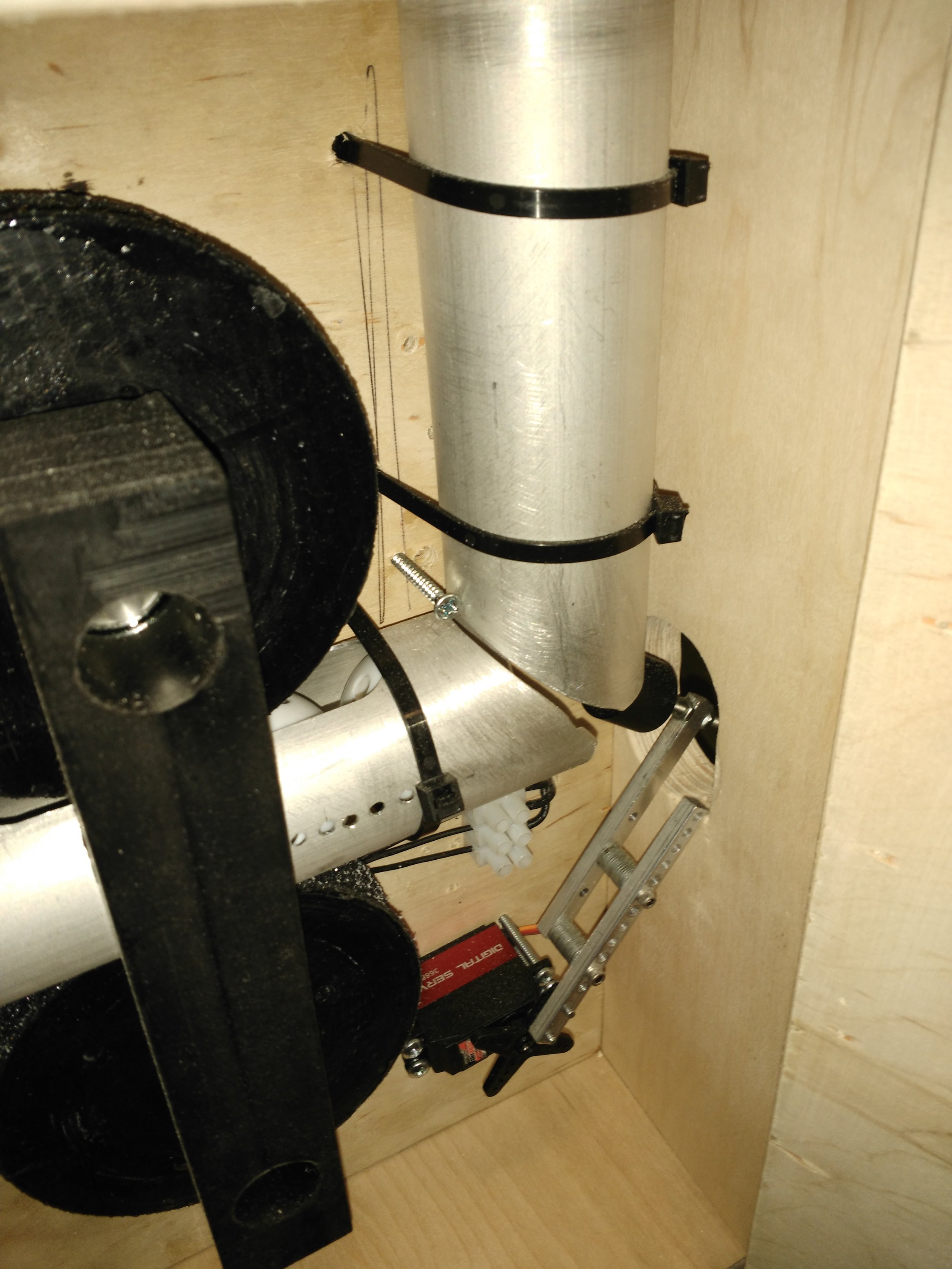DeathSlab Defense Tower
What's a DeathSlab?
As part of City College of San Francisco's ENGN10B class, there are two design challenges. This was the second of the semester, and the class was allowed around 6 weeks to complete it. The "DeathSlab" is a parody/recreation of the trench run on the DeathStar from StarWars, only now the trench isn't straight...
Objective:
Design an automated gun to shoot at line following robots traveling in a circuitous trench run. The trench run track is 24 feet long, and 4 feet wide, with a 15” wide trench. In various locations in the trench, HC-SR04 ultrasonic distance sensors were available to sense the distance/presence of an incoming robot. Per oncoming robot, a pair of defending teams was allowed to shoot up to 4 practice golf balls (roughly ping—pong ball shape and size, but with holes).
Points awarded for hits in each of three zones in the track, with three points for longest range shots. We were limited to 9 volt electrical systems, and no compressed gas was allowed. Time to build and test was 6 weeks.
Design Decisions:
I tried a number of interesting approaches before settling on a flywheel gun design. Previous ideas even included a vacuum gun (since the wording said "no pressurized gas", but said nothing about using atmospheric pressure relative to an induced vacuum).
Using an Arduino to monitor the ultrasonic sensors, I wrote code to control a pair of r/c drone brushless motors attached to electronic speed controllers. These motors ran at the maximum allow voltage of 9v, but since there was no current limit listed, the power source allowed them to peak at 20 amps each!
Two flywheels were turned, then milled to have a perfect curvature to match the diameter of the ball.
The maximum tangential speed of the ~4” flywheels (running at 9000rpm), was 105 mph. These wheels moved so quickly that transferring the momentum to the ball was very difficult, and resulted in shearing the top surfaces of the ball off. The solution i eventually settled on was to epoxy coarse grit sandpaper to the surface of the wheels, resulting in a more mechanical connection between the surface of the ball and the wheels.
A very fast servo motor (0.07s/60°) was used to push the ball through the feed tubes and into the rotating wheels.
Results:
The task of hitting an oncoming robot is pretty tough! I built the only device that did it at all, and we scored in longest range points zone. After the competition we tried this gun against the fastest robot and it just managed to hit it in the 3 point zone. We won the competition.



